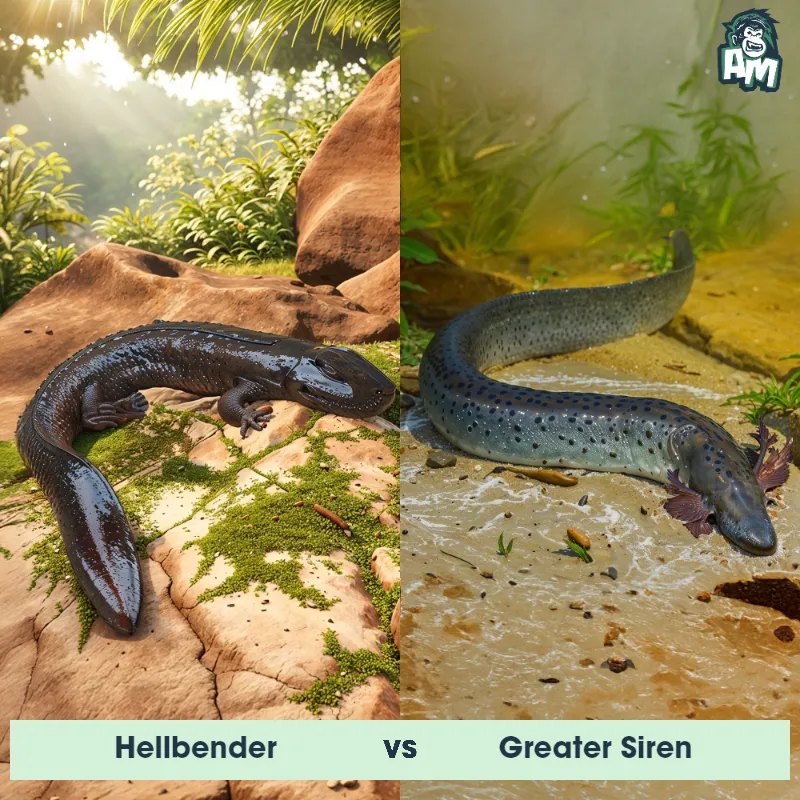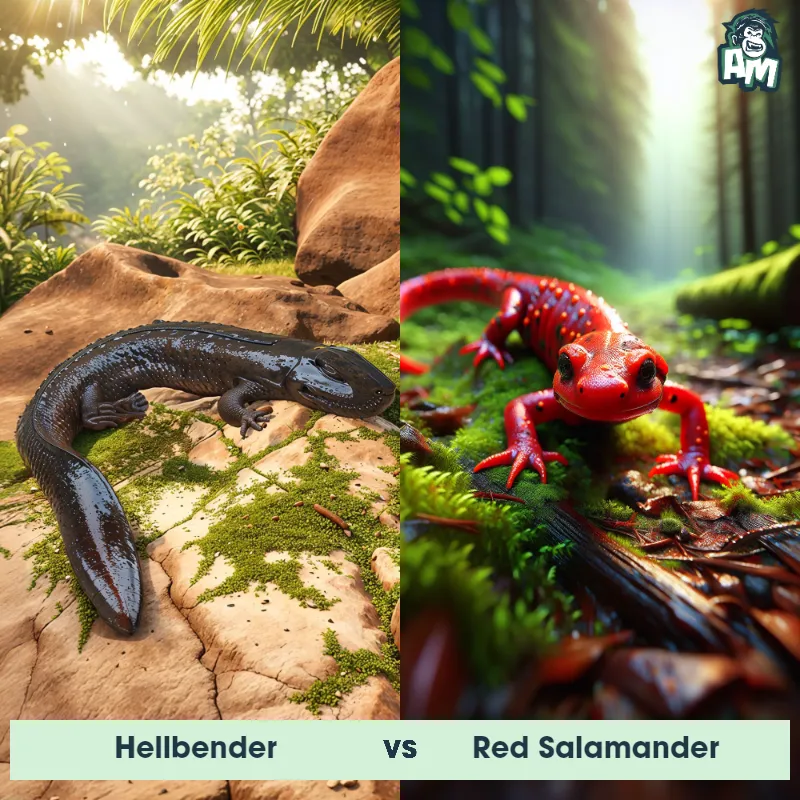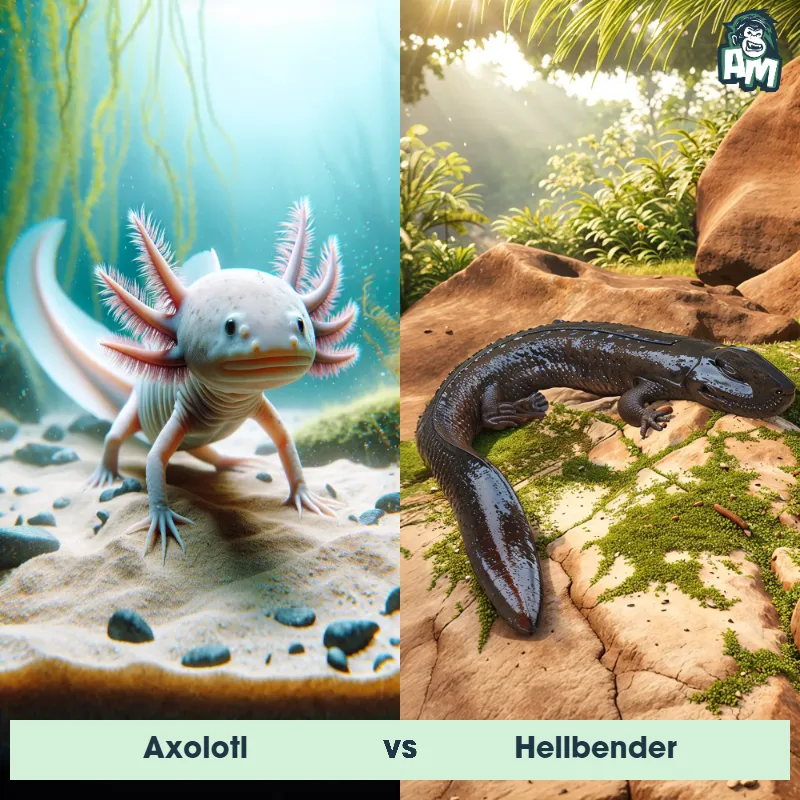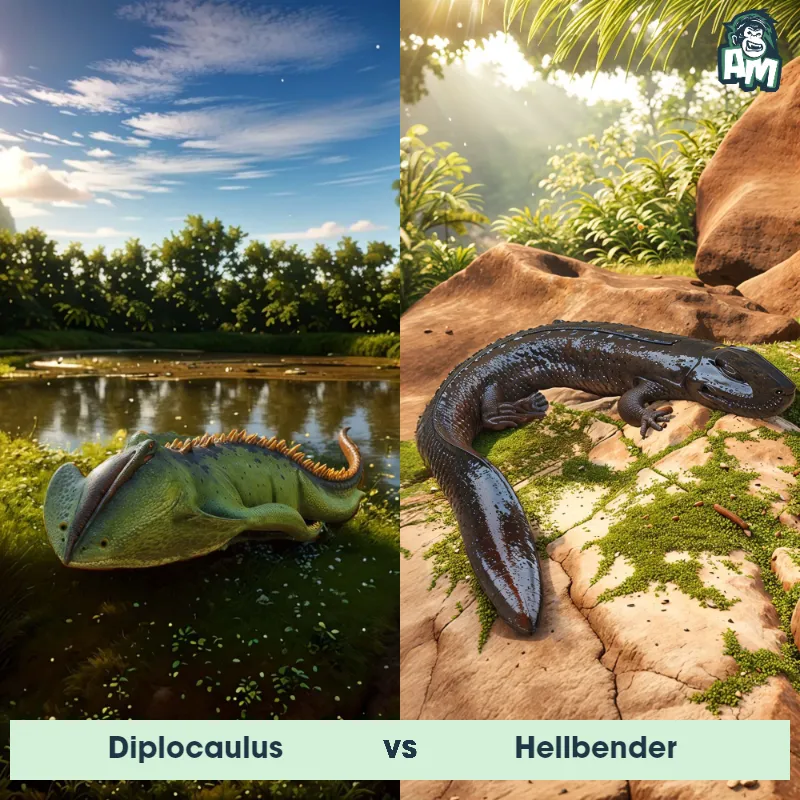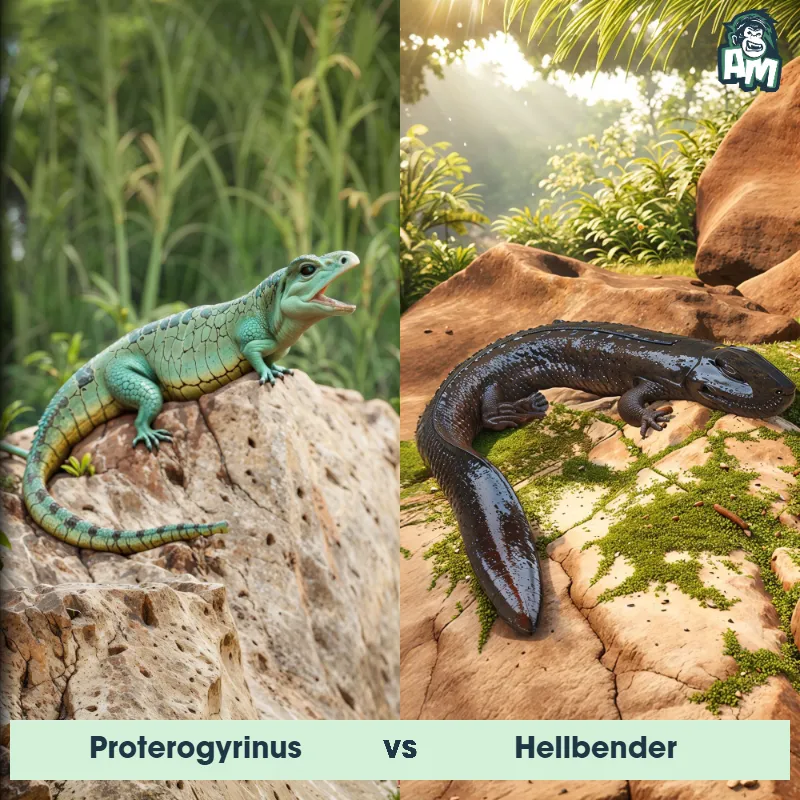The Hellbender
The Hellbender, also known as the snot otter or devil dog, is a large salamander native to eastern North America. It has a flat body, slimy skin, and folds of loose skin on its sides that give it a wrinkled appearance. Hellbenders are excellent swimmers, with small eyes and sensory nodes along their bodies to detect prey in murky waters.
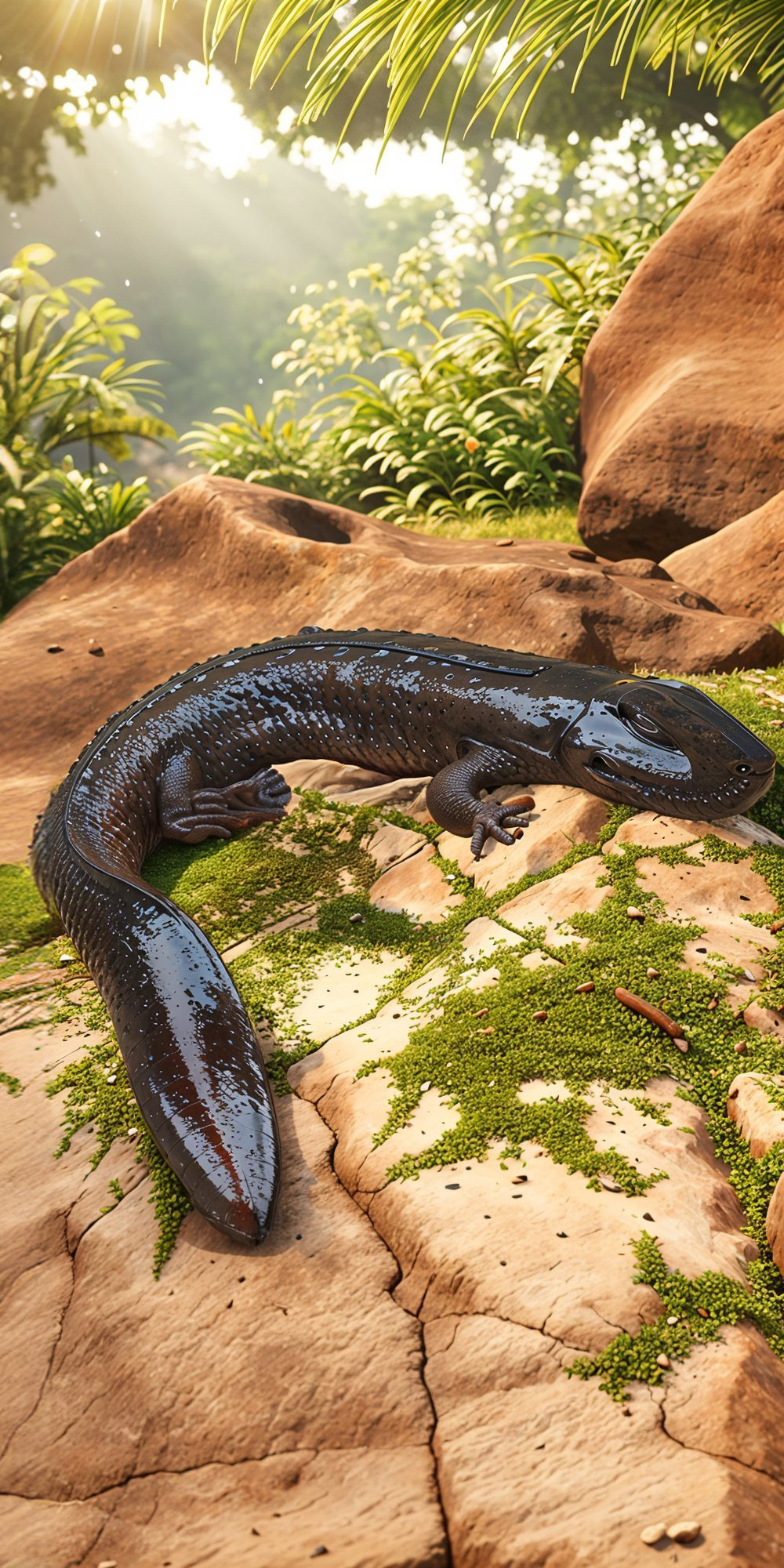
| Hellbender | |
|---|---|
| Size | Up to 29 inches (73.7 cm) |
| Weight | Up to 5 pounds (2.3 kg) |
| Speed | 40mph (64km/h) |
| Key Strength | Sharp teeth |
| Biggest Weakness | Slow movement on land |
| Scientific Name | Cryptobranchus alleganiensis |
| Family | Cryptobranchidae |
| Habitat | Clean, swiftly flowing streams and rivers |
| Geography | Eastern United States |
| Diet | Aquatic insects, crayfish, small fish |
| Lifespan | 29 years - 45 years |

The Hellbender
The Hellbender, also known as the snot otter or devil dog, is a large salamander native to eastern North America. It has a flat body, slimy skin, and folds of loose skin on its sides that give it a wrinkled appearance. Hellbenders are excellent swimmers, with small eyes and sensory nodes along their bodies to detect prey in murky waters.
Fun Fact: Hellbenders can grow up to two feet in length, making them one of the largest species of salamanders in the world.
| Hellbender | |
|---|---|
| Size | Up to 29 inches (73.7 cm) |
| Weight | Up to 5 pounds (2.3 kg) |
| Speed | 40mph (64km/h) |
| Key Strength | Sharp teeth |
| Biggest Weakness | Slow movement on land |
| Scientific Name | Cryptobranchus alleganiensis |
| Family | Cryptobranchidae |
| Habitat | Clean, swiftly flowing streams and rivers |
| Geography | Eastern United States |
| Diet | Aquatic insects, crayfish, small fish |
| Lifespan | 29 years - 45 years |
Hellbender Matchups
We use AI to simulate matchups between the Hellbender and other animals. Our simulation considers size, strength, and natural predatory behaviors to determine the most likely outcome.
Hellbender: Diet, Predators, Aggression, and Defensive Behaviors
What do Hellbenders eat?
Hellbenders primarily feed on a diet of crayfish, small fish, worms, and insect larvae. They are carnivorous and use their sharp teeth to capture and consume their prey underwater.
Do Hellbenders have any predators?
Hellbenders are known to have a few natural predators, including larger species of fish, birds of prey, and mammals like otters and raccoons. However, due to their nocturnal and elusive nature, they are able to avoid many potential predators.
Are Hellbenders aggressive?
Hellbenders are not typically aggressive towards other creatures, including humans. They are shy and solitary creatures that prefer to hide under rocks during the day and come out to feed at night.
Do Hellbenders fight?
Hellbenders do not engage in physical fights with other individuals of their species. They use body language, vocalizations, and chemical signals to communicate and establish territories, but fights are rare.
How do Hellbenders defend themselves?
Hellbenders have several defense mechanisms to protect themselves from predators. They can release a toxic substance through their skin that deters potential threats, as well as using their sharp teeth and strong jaws in self-defense if needed.
What is the biggest weakness of Hellbenders in a fight?
One weakness of Hellbenders in a fight is their relatively slow movement on land. While they are well-adapted for aquatic environments, their cumbersome nature on land can leave them vulnerable to predators or threats that are quick and agile on land.
Fun Fact: Despite their fearsome nickname, Hellbenders are harmless to humans and play a vital role in their ecosystems as indicators of water quality.
Fun Fact: Hellbenders are known for their unique method of respiration, as they absorb oxygen through their skin instead of relying solely on lungs.



